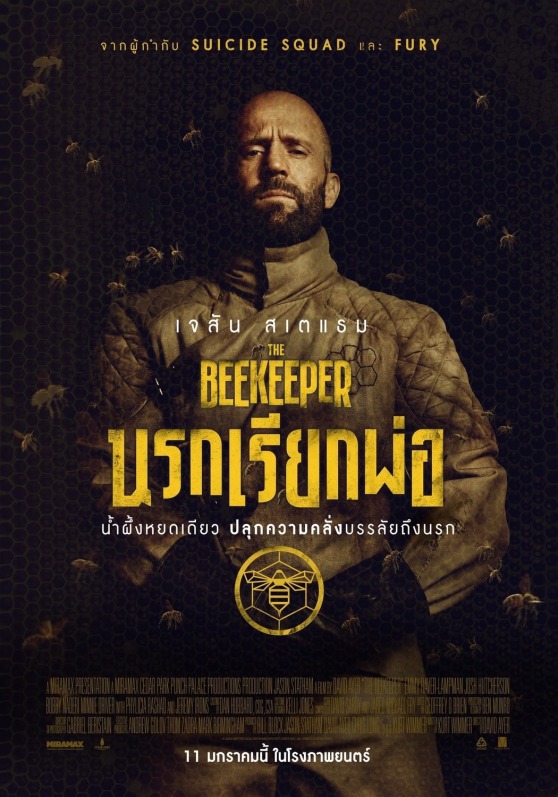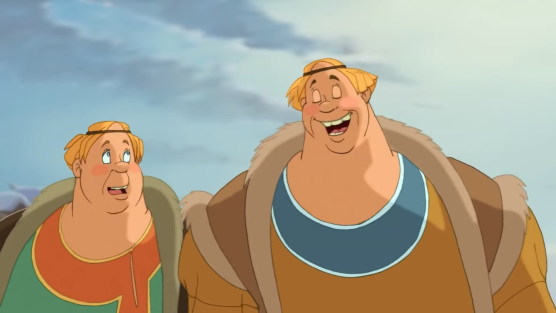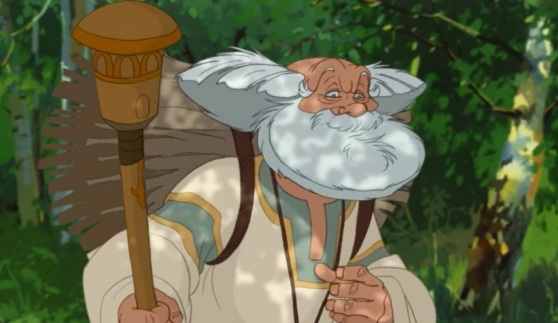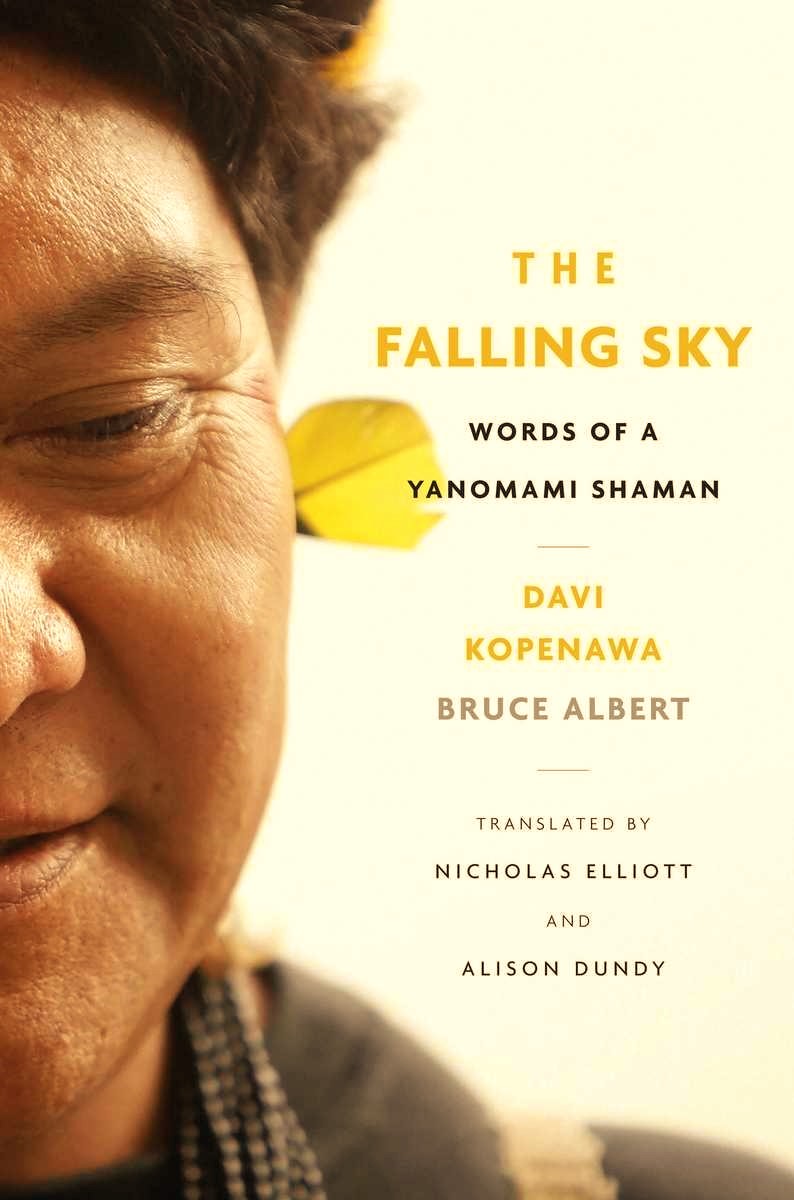
The Beekeeper is a 2024 American action thriller film directed by David Ayer and written by Kurt Wimmer. The film stars Jason Statham, Emmy Raver-Lampman, Josh Hutcherson, Bobby Naderi, Phylicia Rashad and Jeremy Irons. (wiki)

The Beekeeper is a 2024 American action thriller film directed by David Ayer and written by Kurt Wimmer. The film stars Jason Statham, Emmy Raver-Lampman, Josh Hutcherson, Bobby Naderi, Phylicia Rashad and Jeremy Irons. (wiki)
spacetime coordinates: late 10th century Kievan Rus

Prince Vladimir (Russian: Кня́зь Влади́мир, Knyaz’ Vladimir) is a 2006 Russian traditionally-animated feature film. It is loosely based on the story of prince Vladimir the Fair Sun, who converted Kievan Rus’ (a predecessor state of Russia, Ukraine, and Belarus) to Christianity in the late 10th century. The film tells a romanticized version of the story, adapted for children and filled with fantasy elements. (wiki)








imdb / Oleg of Drelinia / Yaropolk I of Kiev / Pechenegs / volkhvy priests / Perun
Umma (엄마) is a 2022 Korean-American supernatural horror film, written and directed by Iris K. Shim. The film stars Sandra Oh, Fivel Stewart, MeeWha Alana Lee, Tom Yi, Odeya Rush, and Dermot Mulroney. (wiki)
timespace coordinates: In 2093, a team of scientists embarks on a journey into space aboard an advanced ship called the Nightflyer to make first contact with alien life-forms.
Nightflyers is an American horror science fiction television series on Syfy that premiered in the United States on December 2, 2018 and on Netflix, internationally on February 1, 2019. The series is based on the novella and series of short stories of the same name by George R. R. Martin. The first season consisted of ten episodes, which concluded on December 13, 2018. On February 19, 2019, it was reported that Syfy had canceled the series. (wiki)
Apart of the current divisive populist politics in this 2020, there is this widening gap that seems to separate the past i.e. these last years of microbiome and holobiont revelations, the recognition of Lynn Margulis’s life’s work, of probiotics, craft beers, hipster sourdough homemade bread, super-bugs multi-resistance warnings – and the sudden ramping up of antibacterial soaps production and biocidal technologies. While invisible for much of mankind’s history and ultimately relegated to imaginary beings, demons, spirits – bacteria and viruses (not to talk about mushroom, molds and their kin) have been with us, in and on us since the beginning and while their profile is rising for the first time, enriching our schlock ‘blob’ B-movie repertoire (our heightened sense of contagion is already indistinguishable from general online virality). As an aside in our management-drenched culture, I might add that the very start-up culture of late capitalism, of venture capital and tech unicorns (TESLA, Google, Amazon etc) – overshadows another use of the term “starter” – maybe its initial, dirty secret embedded in its biological anb biosemiotic material sense, the one in which there is always something antecedent, some highly transmissible starter-culture, a microbial mat that has preceded all ulterior divisions, ever evolving invasions, and upon which back everything else grows, blooms, and who’s metabolic pathways and chemical chain reactions we enjoy, inherit, borrow or dread. There is scope in just having a look into the various questions raised by scientist regarding this undercover complexity that animates much of what we regard as the most basic, simple (and thence falsely simplistic) and mostly still highly disregarded (non charismatic) organisms.
With current rising ‘Pandemic Fatigue’ and governments searching for new ways to variously entice and/or enforce effective restrictions and contact tracing technologies, one should balance it out with the work of Rob Dunn (check out his classic The Wild Life of Our Bodies: Predators, Parasites, and Partners That Shape Who We Are Today), Dr. Anne A. Madden (The Kingdom documentary which I urge u to see), Sandor Katz (Wild Fermentation primer), Athena Aktipis (applying system biology and evo-devo to cancer research). They and a bunch of other wonderful people at NC State University’s Department of Applied Ecology including Lauren Nichols, Erin McKenney under self-isolation measures have organized this year’s incredible series of webinars concerning FERMENTOLOGY – the incredible shapeshifting science of fermentation, ‘umami’ taste with a motley crew honing changing practices, field research experience, trough labs and out of lab works, trough ancient history archaeology and multispecies coreographies in humans and non-humans.
As a fellow practitioner and fermentation necromancer, putrescient beginner and bacterealist I urge you to check out these free seminars below. Climate science outreach has become a caricature of struggling to reach the decision makers, an important lesson in loosing its touch with an increasingly disdainful and aggressively non-scientific (or not sufficiently scientific) crowd (including politicians) . yet microbiology and fermentology offers hope in the sense that it has became highly pop – both in bad (as every hype can witness) and good example of translatable, relatable, surprisingly material gooey way of exploring new and exciting discoveries that somehow have a two pronged way: both home kitchen and highly rated chef restaurateur, both laboratory oriented outcomes and field work, both insider talk and informing day to day people’s experiences. While heeding all the warning signs of the groomed bearded sourdough hipster (mostly male bro type) guy – and his newfound hobby in its breadtivist breadarian accusatory tinge – it is still a fact that such slimy, sticky gooey (almost in tandem with the slime – kids videos) have raised the profile of wild fermentation online around the globe. Partly industrial knowledge, partly hype, partly a blob of big pharma and wild fermentation bio hacking type of exchanges – its troublesome and meddling prospects prosper at the edge of traditional knowledge expropriation and biocapitalisation and/or speculative biological experimentation.
Deep Time Background + take it with a grain: Maybe grasslands should be seen as the first in a series of new warming earth changes at the geologic scale – that started happening roughly 20 mil yr ago (accelerating incredibly nowadays due to human herd in tow with other herds that have been replacing dwindling forests environments) and have included co-evolved multiple stomachs, specific enzymes from grass and grain digesting yeasts and bacteria). While mostly growing around bread and sourdough, these webinars have been more than diverse – encompassing cheese, milk etc You will say ahhhhhh AGAIN the grain-grass eater ecosystemic bias – well yes, grass again (!!) in an age of steppes, grasslands, lawns, dwindling forests and high yield crops – the haunt of all those Neolithic revolutionaries. Well grasses and ruminants are here to stay so we better learn and ruminate along. In spite of gluten free authoritarianism bread keeps diversifying and going in unsuspected directions. And so not any grain is on the menu, so one might also see here a Western- North /Near-Eastern/Fertile Crescent bias towards a particular kind of grain products (so not so much about rice culture and rice wine fermentation – or pickling such as jiu niang (酒酿) or miso using koji.
Read more about the Fermentology seminars here
A few of the highlights for me (although please consider watching all of them since they are very much in tune to what I mentioned above):
Jessica (Jessie) Hendy is a lecturer in paleoproteomics at the University of York where she studies ancient proteins associated with foods in archaeological sites. Jessie will describe her research at ancient archaeological sites in Turkey, Mongolia and elsewhere to understand, using ancient protein analyses, the beginnings of milk fermentation. She will take viewers on a journey to one of her archaeological sites, describe her approach to archaeology and consider take homes from her work with regard to what anyone can do in their kitchen with milk today.
Jessie has recently made major discoveries with regard to the history of Mongolian dairying and dairy fermentation and the oldest dairy fermentation in the world. This talk is sponsored and supported by the Max Planck Institute’s ERC-funded project, Dairy Cultures. (YT description)
Margarita López-Uribe is the Lorenzo L. Langstroth Early Career Professor at Pennsylvania State University’s Department of Entomology where she studies bees of many kinds. Many bees rely on fermentation in different ways (some ferment nectar, others pollen, others still ferment leaves). Margarita will talk about the fermentation carried out by honeybees. Honeybees make bread out of pollen that they ferment (and then feed to their babies). Margarita and her student Brooke talk about what goes into making bee bread and what microbes are involved in this process. They will also share preliminary data of an ongoing project about how various biocides shape bee bread microbiome.
This talk is supported and promoted by the NC State Apiculture Program.(YT)
In many parts of the world, especially in regions with limited growing seasons and long winters, people preserve vegetables through fermentation. Learn about the illustrious history of fermented vegetables, the science behind it, and how simple it is to ferment vegetables yourself at home. This talk is hosted by Sandor Ellix Katz, a fermentation revivalist. His books Wild Fermentation and The Art of Fermentation, along with the hundreds of fermentation workshops he has taught around the world, have helped to catalyze a broad revival of the fermentation arts. A self-taught experimentalist who lives in rural Tennessee, the New York Times calls him “one of the unlikely rock stars of the American food scene.” S
andor is the recipient of a James Beard award and other honors.(YT)
How does fermentation fit into your zombie apocalypse preparation plan? Fermenting can provide a number of benefits – from enhancing the nutritional value of your food, to preserving it for the long haul, to cultivating antimicrobial compounds that might help protect you from the agents of the zombie apocalypse. Fermented foods are also an example of multi-species cooperation that might serve as a good example for us all for how we might cooperate to survive the zombie apocalypse.
Athena Aktipis is an assistant professor of psychology at Arizona State University, chair of the Zombie Apocalypse Medicine Alliance, and co-director of the Human Generosity Project. She is the author of the new book The Cheating Cell from Princeton University Press and the host of the science podcast Zombified.(YT)
Tate Paulette is an archaeologist and Assistant Professor at NC State’s Department of History. He studies agriculture, food, and fermentation in the ancient world, with a particular focus on Bronze Age Mesopotamia. He co-directs archaeological excavations at the site of Makounta-Voules-Mersinoudia in Cyprus (Makounta-Voules Archaeological Project), and he is currently working on a book about the history/archaeology of beer in Mesopotamia. In this talk, we will explore the foods and, especially, the fermented foods of ancient Mesopotamia. We will look at ancient recipes, royal inscriptions, administrative records, archaeological remains, artistic works, and more on our culinary tour through the famous “land between the rivers.” Particular attention will be devoted to bread, beer, yogurt, and cheese, the fermented cornerstones of the Mesopotamian diet.
This talk is co-sponsored by NC State’s College of Humanities and Social Sciences.(YT)
In this talk, Benjamin Wolfe will explore how microbes compete and cooperate in cheese rind microbiomes. From fungal highways on wheels of Saint Nectaire to antibiotic producing fungi in cheddar, we’ll learn about the ecology and chemistry of microbial interactions in some of your favorite stinky cheeses. We will also learn how cheesemakers can use this knowledge of microbial interactions to improve the safety and quality of their products. Benjamin Wolfe is the Aptman Family Assistant Professor of microbiology at Tufts University.
The Wolfe Lab at Tufts uses fermented foods as model systems to identify the processes that shape the diversity of microbiomes. In addition to research focused on the basic biology of microbes, the Wolfe lab has worked with chefs and food producers, including David Chang’s Momofuku Culinary Lab and Jasper Hill Farms, to understand the roles of microbes in creating the diversity of flavors in fermented foods. This talk is co-sponsored by NC State’s College of Humanities and Social Sciences. (YT)
The origins of bread have long been associated with the development of farming communities that first cultivated and domesticated cereals in the Fertile Crescent 10,000 years ago. However, most recent discoveries show that bread was not a product of farming, but perhaps something which fuelled it. Amaia and Lara will share the story of the discovery of the oldest bread and what we do and don’t know about its recipe, how it was baked and more. They will also talk about the cereal-based foodstuffs that prehistoric communities consumed in southwest Asia and how they changed with the development of new technologies such as pottery.
Amaia Arranz Otaegui is Assistant Professor at the University of Copenhagen. She is an archaeobotanist and investigates the use and consumption of plants by prehistoric hunter-gatherers and early farming communities in southwest Asia. Lara Gonzalez Carretero is an archaeobotanist at the Museum of London Archaeology (MOLA) and a researcher at the Scientific Department of the British Museum. She is an expert on the study of archaeological food remains, with especial interest in cereal meals such as bread, porridge, etc. (YT)
The world’s oldest culinary recipes exist in the form of clay tablets from ancient Babylonia dating to the 18th century BCE. In this talk, Patricia Jurado, Gojko Barjamovic and Pia Sörensen from Harvard University will introduce the history and science of the recipes, as well as their team’s efforts interpreting and reproducing them. Their work follows an experimental approach and draws on expertise from their team’s collective backgrounds in assyriology, the life sciences, and culinary practice and history. Join us for this deep dive into culinary history — you may even come away knowing how to cook a 4,000 year old recipe!
The team that conducted this research includes:
Part of the 2020 BEESS seminar series: Wildlife microbiomes, the complex communities of microorganisms that inhabit virtually every body site, perform countless micro-ecosystem services for their host, profoundly affecting wildlife behavior, physiology, reproduction, health, survival and ultimately evolution.
To study these tightly co-evolved systems, I strive to build diverse and collaborative interdisciplinary research teams to (a) advance our knowledge of the eco-evolutionary factors (e.g., sex, diet, phylogeny) governing wildlife-associated microbiomes, (b) identify species-specific microbiomes that can serve as sentinels for environmental quality (i.e., biomarkers for wildlife population health), (c) evaluate the impact of environmental perturbations on wildlife microbiome functions, and (d) inform management decisions to promote long-term conservation of wildlife and their symbiotic microbes.(YT)
The world’s oldest culinary recipes exist in the form of clay tablets from ancient Babylonia dating to the 18th century BCE. In this talk, Patricia Jurado, Gojko Barjamovic and Pia Sörensen from Harvard University will introduce the history and science of the recipes, as well as their team’s efforts interpreting and reproducing them. Their work follows an experimental approach and draws on expertise from their team’s collective backgrounds in assyriology, the life sciences, and culinary practice and history. Join us for this deep dive into culinary history — you may even come away knowing how to cook a 4,000 year old recipe!
#The team that conducted this research includes: + Patricia Jurado Gonzalez (Research Scholar, Harvard University), + Gojko Barjamovic (Senior Lecturer on Assyriology, Harvard University), + Pia Sörensen (Senior Preceptor in Chemical Engineering and Applied Materials, SEAS, Harvard University), + Chelsea Alene Graham (Digital Imaging Specialist at the Institute for the Preservation of Cultural Heritage, Yale University), + Agnete Wisti Lassen (Associate Curator of the Yale Babylonian Collection, Yale University), + Nawal Nasrallah (Culinary historian, author, chef) (YT)
 The Happening is a 2008 psychological horror-thriller film written, co-produced and directed by M. Night Shyamalan and starring Mark Wahlberg, Zooey Deschanel, John Leguizamo and Betty Buckley. The film follows a man, his wife, his best friend and his friend’s daughter as they try to escape from an inexplicable natural disaster.
The Happening is a 2008 psychological horror-thriller film written, co-produced and directed by M. Night Shyamalan and starring Mark Wahlberg, Zooey Deschanel, John Leguizamo and Betty Buckley. The film follows a man, his wife, his best friend and his friend’s daughter as they try to escape from an inexplicable natural disaster.
Shyamalan told the New York Daily News: “We’re making an excellent B movie, that’s our goal”. Some critics enjoyed it because of this. Glenn Whipp said, “Tamping down the self-seriousness in favor of some horrific silliness, M. Night Shyamalan’s The Happening plays as a genuinely enjoyable B-movie for anyone inclined (or able) to see it that way”.
Joseph J. Foy, professor of politics and popular culture, describes Shyamalan’s film as an expression of “post-environmentalism” in which traditional paradigmatic politics are replaced with a call for the world to “embrace a revolutionary reevaluation of wealth and prosperity not in terms of monetary net worth or material possessions, but in terms of overall well-being”. (wiki)
The Falling Sky is a remarkable first-person account of the life story and cosmo-ecological thought of Davi Kopenawa, shaman and spokesman for the Yanomami of the Brazilian Amazon. Representing a people whose very existence is in jeopardy, Davi Kopenawa paints an unforgettable picture of Yanomami culture, past and present, in the heart of the rainforest–a world where ancient indigenous knowledge and shamanic traditions cope with the global geopolitics of an insatiable natural resources extraction industry.

In richly evocative language, Kopenawa recounts his initiation and experience as a shaman, as well as his first encounters with outsiders: government officials, missionaries, road workers, cattle ranchers, and gold prospectors. He vividly describes the ensuing cultural repression, environmental devastation, and deaths resulting from epidemics and violence. To counter these threats, Davi Kopenawa became a global ambassador for his endangered people. The Falling Sky follows him from his native village in the Northern Amazon to Brazilian cities and finally on transatlantic flights bound for European and American capitals. These travels constitute a shamanic critique of Western industrial society, whose endless material greed, mass violence, and ecological blindness contrast sharply with Yanomami cultural values.
Bruce Albert, a close friend since the 1970s, superbly captures Kopenawa’s intense, poetic voice. This collaborative work provides a unique reading experience that is at the same time a coming-of-age story, a historical account, and a shamanic philosophy, but most of all an impassioned plea to respect native rights and preserve the Amazon rainforest. (amazon)
“When I come back from a trip among the white people, the dizziness leaves my eyes after a while and my thought be-comes clear again. I no longer hear cars, machines, or airplanes. I only lend an ear to the tooro toads and krouma frogs that call the rain in the forest. I only hear the rustling of the leaves in the wind and the rumbling of the thunders in the sky. The ignorant words of the city politicians gradually vanish in the quiet of my sleep. I become calm again by going to hunt and making my spirits dance.
The forest is very beautiful to see. It is cool and aromatic. When you move through it to hunt or travel, you feel joyful and your mind is slow-paced. You listen to the chirping of the cicadas in the distance, or the cries of the curassows and the agami herons, and the clamor of the spider monkeys in the trees. Your worries are eased. Your thoughts can then follow one another without getting obscured.”